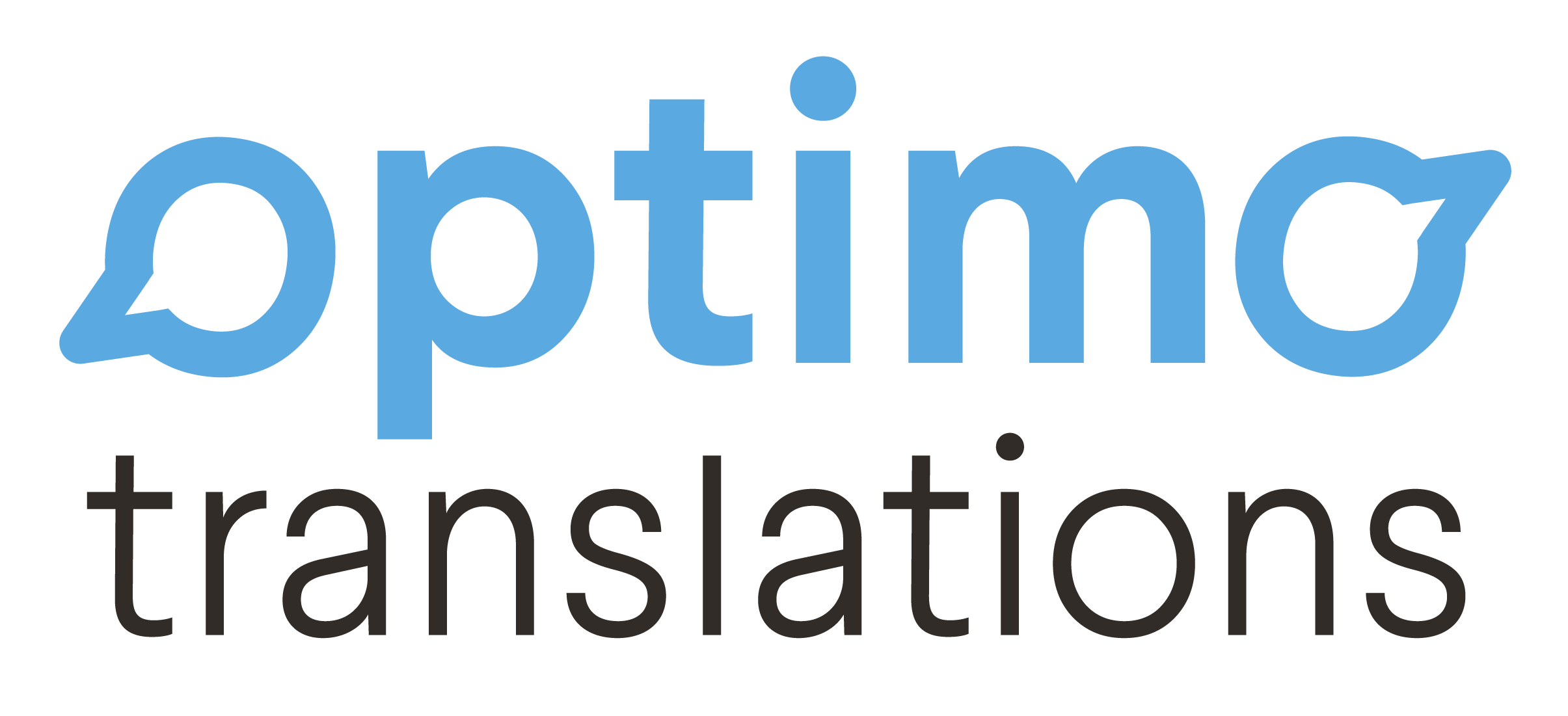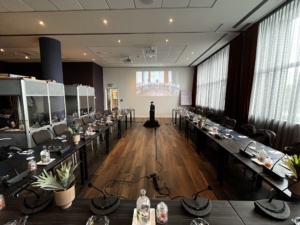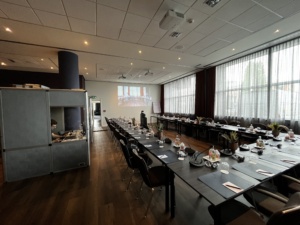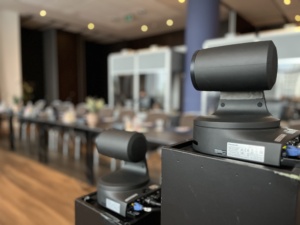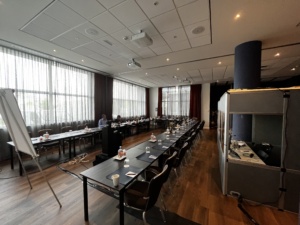Ghent, 12 May 2023
Hybrid Meeting with 12 Languages for Belgian Multinational
Experience the revolution of hybrid meetings with our successful service provided to one of our esteemed Belgian clients!
For this meeting, we created a seamless blend of physical and online presence, allowing participants to follow the meeting in their own native language through simultaneous translation in no less than 12 languages (Dutch, English, French, German, Spanish, Italian, Polish, Czech, Romanian, Norwegian, Swedish, and Danish).
To minimise travel and hotel costs for our client, we had the majority of our interpreters working remotely using an advanced online platform. Both the attendees physically present in the meeting room and those participating online could enjoy live and real-time simultaneous translation without any delay! Online participants were even displayed life-size on a projection screen, enabling them to actively engage in the meeting.
Our automated camera system in the room ensured that both online participants and interpreters had a perfect view of what was happening and who was speaking.
Despite the technical challenges associated with setting up this meeting, everything went flawlessly. We were able to create a seamless experience that enabled our client and all participants to communicate smoothly and efficiently, regardless of their location or language.
Discover the possibilities of hybrid meetings with our innovative and reliable services!
Ghent, 14 March 2023
Simultaneous Interpretation: What it is and How it Works
For companies hosting multilingual events, meetings or conferences, communication can be a challenge. Simultaneous interpretation is an efficient solution to facilitate communication and avoid misunderstandings. In this article, we will discuss what simultaneous interpretation is, why interpreters work in pairs, the technical equipment used, and how to ensure a successful interpretation experience.
What is Simultaneous Interpretation?
Simultaneous interpretation is a mode of interpreting where the interpreter conveys the message in the target language at the same time as the speaker is speaking in the source language. Unlike consecutive interpretation, where the interpreter waits for the speaker to finish speaking before interpreting, simultaneous interpretation happens in real-time. This type of interpretation is commonly used in large conferences, technical trainings, and meetings with international participants.
Why do Interpreters Work in Pairs?
Simultaneous interpretation requires a lot of focus and concentration. Interpreters usually work in pairs, alternating every 30 minutes, to ensure that their performance remains accurate and consistent. When one interpreter is interpreting, the other can rest and prepare for their turn. Pairs of interpreters also have a built-in safety net to ensure that the interpretation is not interrupted in case of technical difficulties or if one of the interpreters becomes ill.
Technical Equipment Used for Simultaneous Interpretation
Several types of technical equipment can be used for simultaneous interpretation, depending on the client’s budget and the circumstances. For example, a soundproof interpreting booth can be set up at the back of the meeting room, and the interpreters will speak into a microphone while the participants will use wireless headsets to listen to the interpretation. Alternatively, a mobile Tourguide system can be used, allowing interpreters to follow the participants wherever they go. It is often used for smaller meetings with a very limited audience (up to 20 participants).
For larger meetings or conferences, apart from an interpreting booth, other technical equipment such as a mixing console, loudspeakers, and a projector may also be necessary. The mixing console enables the sound technician to control the volume of the interpreters’ microphones and the speakers for the participants, ensuring optimal sound quality.
Ensuring a Successful Simultaneous Interpretation Experience
To ensure a successful simultaneous interpretation experience, it is important to prepare in advance. Choosing the right interpreters with the appropriate specialisations is crucial for the accuracy of the interpretation. Interpreters should also receive any relevant materials or documents in advance to allow them to prepare thoroughly.
Another growing trend is hybrid meetings where some participants and/or interpreters are remote and others are in a meeting room. In this case, extra preparation is necessary to ensure that the interpreters are equipped with the right technology to work from home.
Conclusion
Simultaneous interpretation is a valuable solution for companies that require multilingual communication. By understanding what simultaneous interpretation is, why interpreters work in pairs, and the technical equipment used, companies can be better equipped to plan and execute successful events. To ensure a successful interpretation experience, careful preparation and choosing the right interpreters are crucial.
